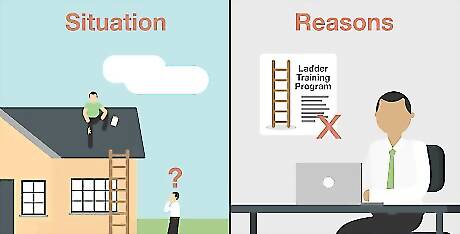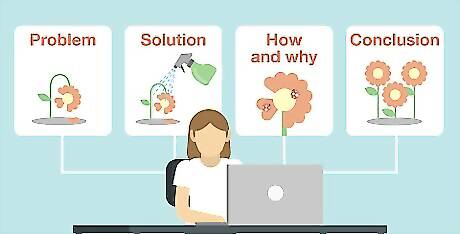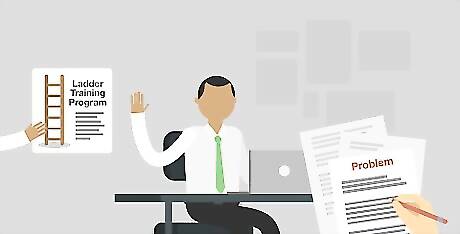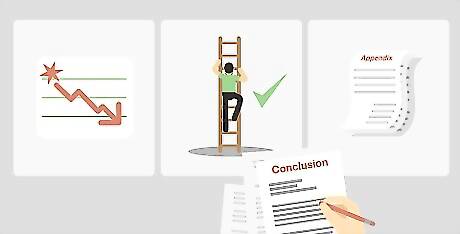
views
Planning Your Proposal

Define your audience. You need to make sure that you think about your audience and what they might already know or not know about your topic before you begin writing. This will help you focus your ideas and present them in the most effective way. It's a good idea to assume that your readers will be busy, reading (or even skimming) in a rush, and not predisposed to grant your ideas any special consideration. Efficiency and persuasiveness will be key. Who will be reading your proposal? What level of familiarity with your topic will they have? What might you need to define or give extra background information about? What do you want your audience to get from your proposal? What do you need to give your readers, so they can make the decision you want them to make? Refine your tone to meet your audience's expectations and desires. What do they want to hear? What would be the most effective way of getting through to them? How can you help them understand what you're trying to say?

Define your issue. It is clear to you what the issue is, but is that also clear to your reader? Furthermore, does your reader believe you really know what you are talking about? You can support your ethos, or writing persona, by using evidence and explanations throughout the proposal to back up your assertions. By setting your issue properly, you start convincing the reader that you are the right person to take care of it. Think about the following when you plan this part: What is the situation this issue applies to? What are the reasons behind this? Are we certain that those, and not others, are the real reasons? How are we sure of it? Has anyone ever tried to deal with this issue before? If yes: has it worked? Why? If no: why not?Tip: Use your summary to show that you've conducted in-depth research to evaluate and understand the issue. Include only the information that's most relevant to your topic, and avoid writing a summary that's obvious to anyone in the field.

Define your solution. This should be straightforward and easy to understand. Once you set the issue you're addressing, how would you like to solve it? Get it as narrow (and doable) as possible. Your proposal needs to define a problem and offer a solution that will convince uninterested, skeptical readers to support it. Your audience may not be the easiest crowd to win over. Is the solution you're offering logical and feasible? What's the timeline for your implementation? Consider thinking about your solution in terms of objectives. Your primary objective is the goal that you truly must achieve with your project. Secondary objectives are other goals that you hope your project achieves. Another helpful way of thinking about your solution is in terms of "outcomes" and "deliverables." Outcomes are the quantifiable results of your objectives. For example, if your proposal is for a business project and your objective is "increase profit," an outcome might be "increase profit by $100,000." Deliverables are products or services that you will deliver with your project. For example, a proposal for a science project could "deliver" a vaccine or a new drug. Readers of proposals look for outcomes and deliverables because they are easy ways of determining what the "worth" of the project will be.

Keep elements of style in mind. Depending on your proposal and who'll be reading it, you need to cater your paper to fit a certain style. What do they expect? Are they interested in your problem? How are you going to be persuasive? Convincing proposals can use emotional appeals, but should always rely on facts as the bedrock of the argument. For example, a proposal to start a panda conservation program could mention how sad it would be for the children of future generations to never see a panda again, but it shouldn't stop there. It would need to base its argument on facts and solutions for the proposal to be convincing. Avoid writing in jargon and using obscure abbreviations or needlessly complex language. Instead, write in plain, direct language as much as possible. For example, instead of saying "rectification of a workplace imbalance," you could simply write, "let employees go."

Make an outline. This will not be part of the final proposal, but it will help you organize your thoughts. Make sure you know all the relevant details before you start. Your outline should consist of your problem, your solution, how you'll solve it, why your solution is best, and a conclusion. If you're writing an executive proposal, you'll need to include things like a budget analysis and organizational details.
Writing Your Own Proposal

Start with a firm introduction. This should start out with a hook. Ideally, you want your readers enraptured from point one. Make your proposal as purposeful and useful as possible. Use some background information to get your readers in the zone. Then state the purpose of your proposal. If you have any stark facts that shed some light on why the issue needs to be addressed and addressed immediately, it's a safe bet that's something you can start with. Whatever it is, make sure what you start out with is a fact and not an opinion.

State the problem. After the introduction, you'll get into the body, the meat of your work. Here's where you should state your concern. If your readers don't know much about the circumstance, fill them in. Think of this as the "state of affairs" section of your proposal. What is the issue? What is causing the issue? What effects does this issue have? Emphasize why your problem needs to be solved and needs to be solved now. How will it affect your audience if left alone? Make sure to answer all questions and cover them with research and facts. Use credible sources liberally.Tip: Make the issue as relevant to the audience as you can. Tie it to their interest or goal as directly as you can. Make it specific to them, and avoid relying solely on generic appeal to emotions or values.

Propose solutions. This is arguably the most important part of your proposal. The solutions section is where you get into how you will address the problem, why you will do it in this way, and what the outcomes will be. To make sure you've got a persuasive proposal, think about the following: Discuss the larger impact of your ideas. Ideas that seem of limited applicability aren't as likely to spark enthusiasm in readers as ideas that could have widespread effects. Example: "Greater knowledge of tuna behavior can allow us to create a more comprehensive management strategy and ensure canned tuna for future generations." Addressing why you will do something is as significant as stating what you will do. Presume that your readers are skeptical and will not accept your ideas at face value. If you're proposing to do a catch-and-release study of 2,000 wild tuna, why? Why is that better than something else? If it's more expensive than another option, why can't you use the cheaper option? Anticipating and addressing these questions will show that you've considered your idea from all angles. Your readers should leave your paper assured that you can solve the problem effectively. Literally, everything you write should either address the problem or how to solve it. Research your proposal extensively. The more examples and facts you can give your audience, the better -- it'll be much more convincing. Avoid your opinions and rely on the hard research of others. If your proposal doesn't prove that your solution works, it's not an adequate solution. If your solution isn't feasible, nix it. Think about the results of your solution, too. Pre-test it if possible and revise your solution if need be.

Include a schedule and budget. Your proposal represents an investment. In order to convince your readers that you're a good investment, provide as much detailed, concrete information about your timeline and budget as possible. Your readers probably understand that your budget may change, especially if this is a startup project, but they want to see that you at least have a cohesive plan. They have to see that you know directionally where you're going to spend the money and how long it's going to last. When do you envision the project starting? At what pace will it progress? How does each step build on the other? Can certain things be done simultaneously? Being as meticulous as possible will give your readers confidence that you've done your homework and won't waste their money. Make sure your proposal makes sense financially. If you're proposing an idea to a company or a person, consider their budget. If they can't afford your proposal, it's not an adequate one. If it does fit their budget, be sure to include why it's worth their time and money.Tip: Stay away from vague or unrelated objectives! Include details, responsibilities, and time commitments for departments and individual staff.

Wrap up with a conclusion. This should mirror your introduction, succinctly wrapping up your general message. If there are consequences of your proposal not being undertaken, address them. Summarize the benefits of your proposal and drive home that the benefits outweigh the costs. Leave your audience thinking ahead. And, as always, thank them for their consideration and time. If you have extra content that doesn't exactly fit into your proposal, you may want to add an appendix. But know that if your paper is too bulky, it may scare people off. If you're in doubt, leave it out. If you have two or more appendices attached to your proposal, letter them A, B, etc. This can be used if you have data sheets, reprints of articles, or letters of endorsement and the like.

Edit your work. Be meticulous in writing, editing, and designing the proposal. Revise as necessary to make it clear and concise, ask others to critique and edit it, and make sure the presentation is attractive and engaging as well as organized and helpful. Have another set of eyes (or two) read over your work. They'll be able to highlight issues your mind has grown blind to. There may be issues that you haven't completely addressed or questions you've left open-ended. Eliminate jargon and clichés! These make you look lazy and can get in the way of understanding. Don't use a long word when a short word will do just as well. Avoid the passive voice whenever possible. Passive voice uses forms of "to be" verbs and can make your meaning unclear. Compare these two sentences: "The window was broken by the zombie" and "The zombie broke the window." In the first, you don't know who broke the window: was it the zombie? Or was the window by the zombie and just happened to also be broken? In the second, you know exactly who did the breaking and why it's important. Use strong, direct language and avoid muddling your proposal with qualifiers and extra phrasing. For example, instead of using phrases like "I believe that...," or "this solution may aid...," say, "The plan will significantly reduce poverty rates."

Proofread your work. Editing focuses on getting the content as clear and concise as you can make it. Proofreading makes sure that your content is free of mistakes. Go over your proposal carefully to catch any spelling, grammar, or punctuation errors. Any mistakes on your end will make you look less educated and less credible, reducing your likelihood of getting approved. Make sure that your formatting is in line with whatever the guidelines require.



















Comments
0 comment